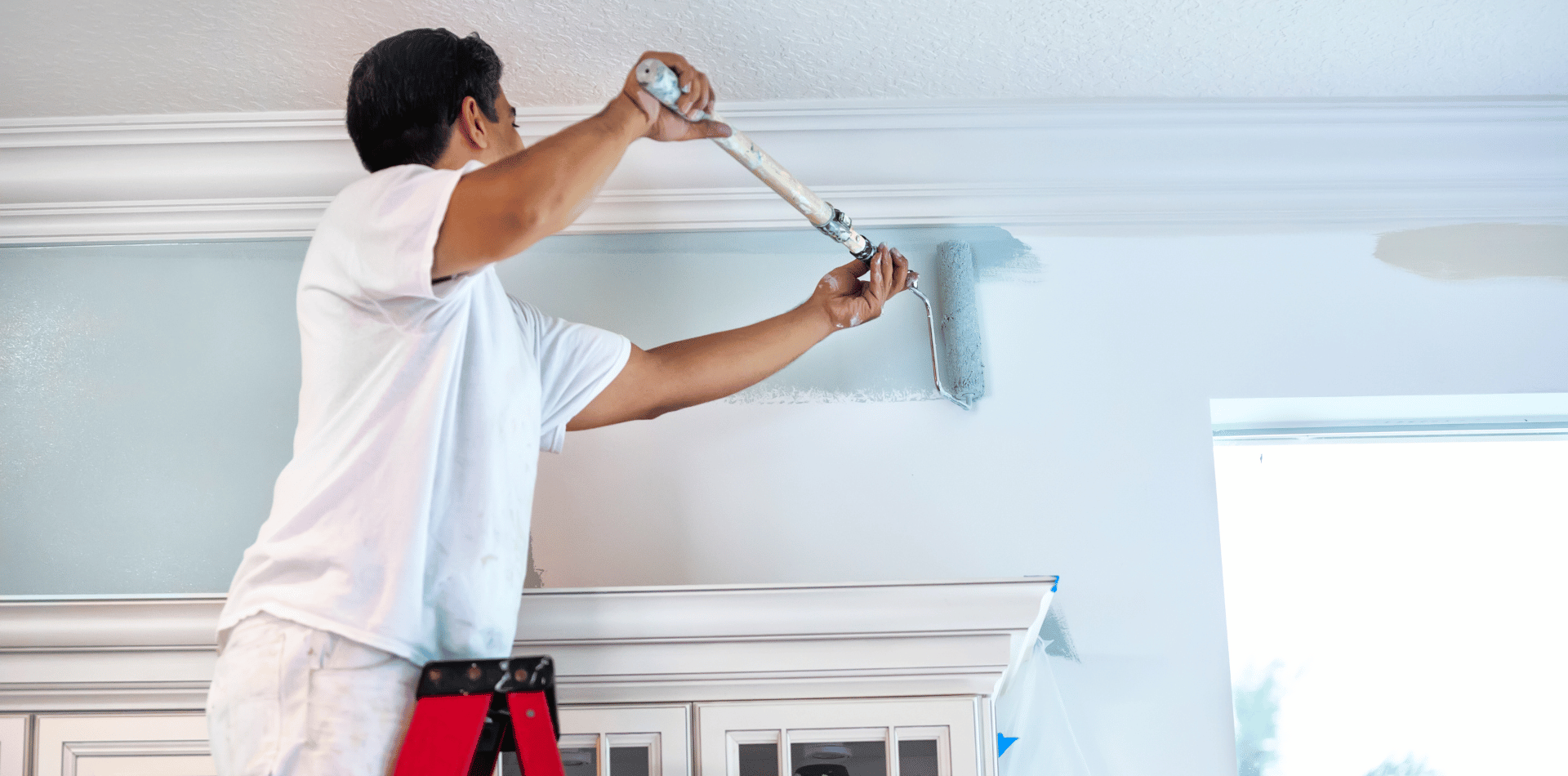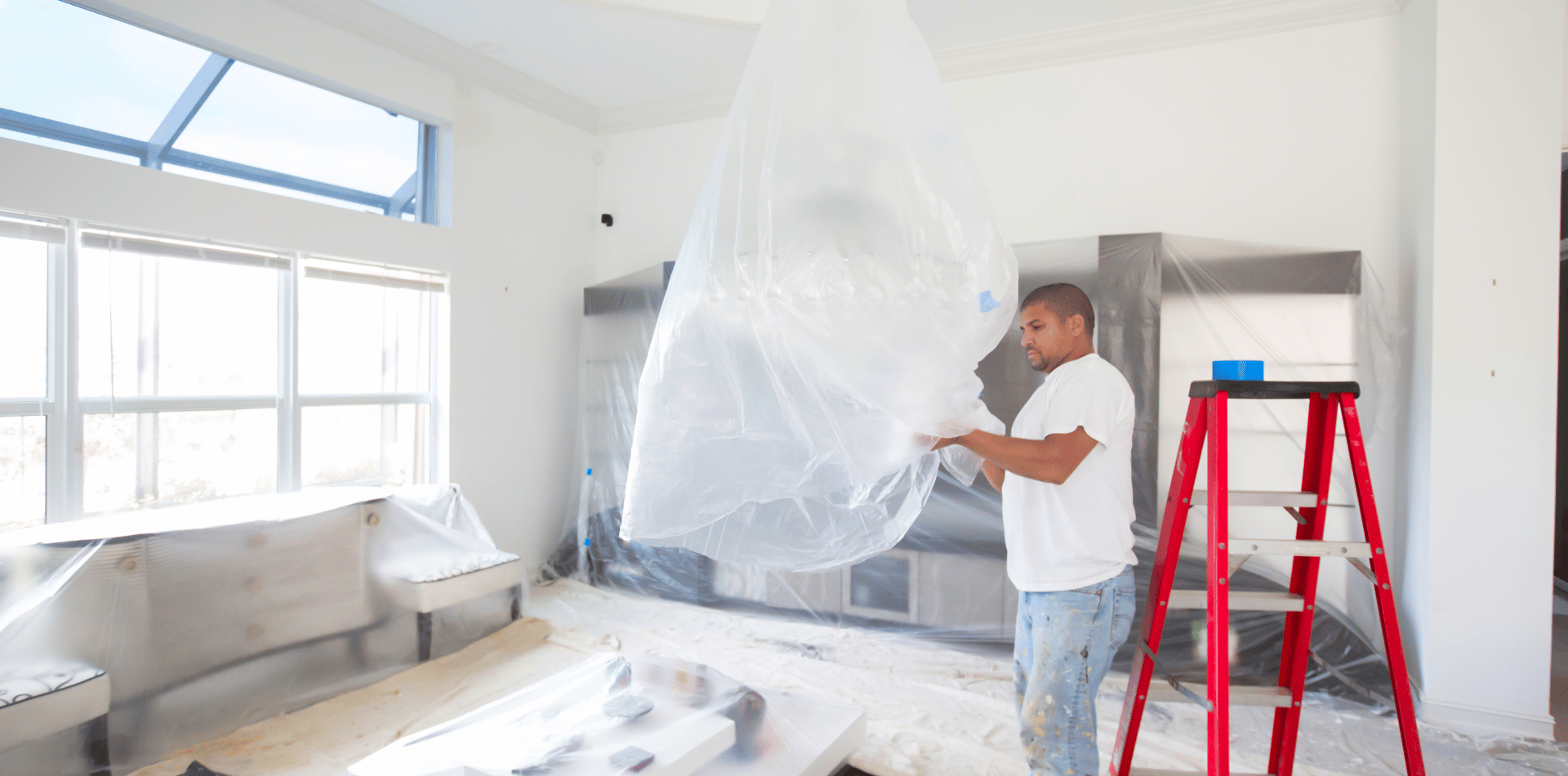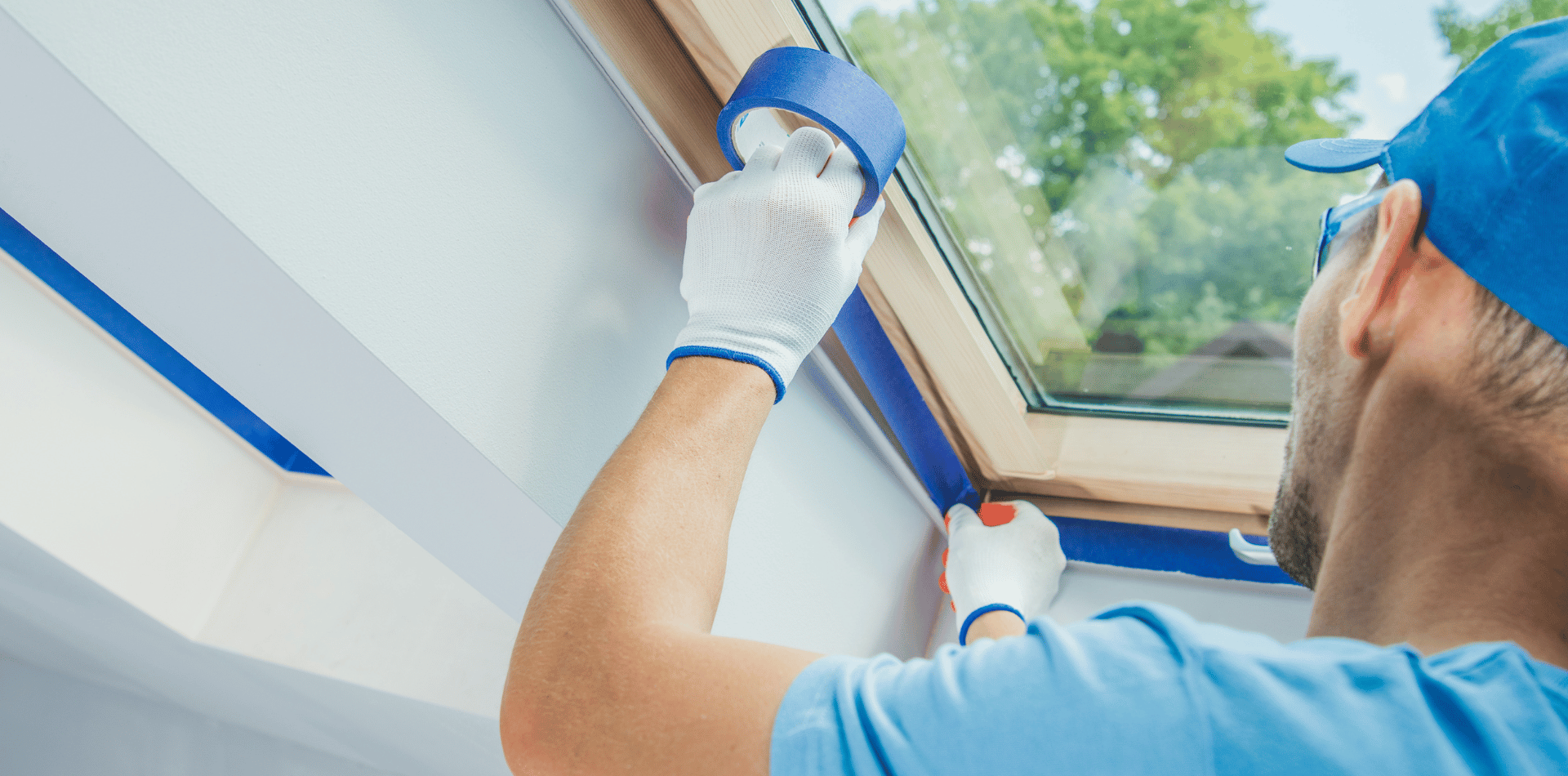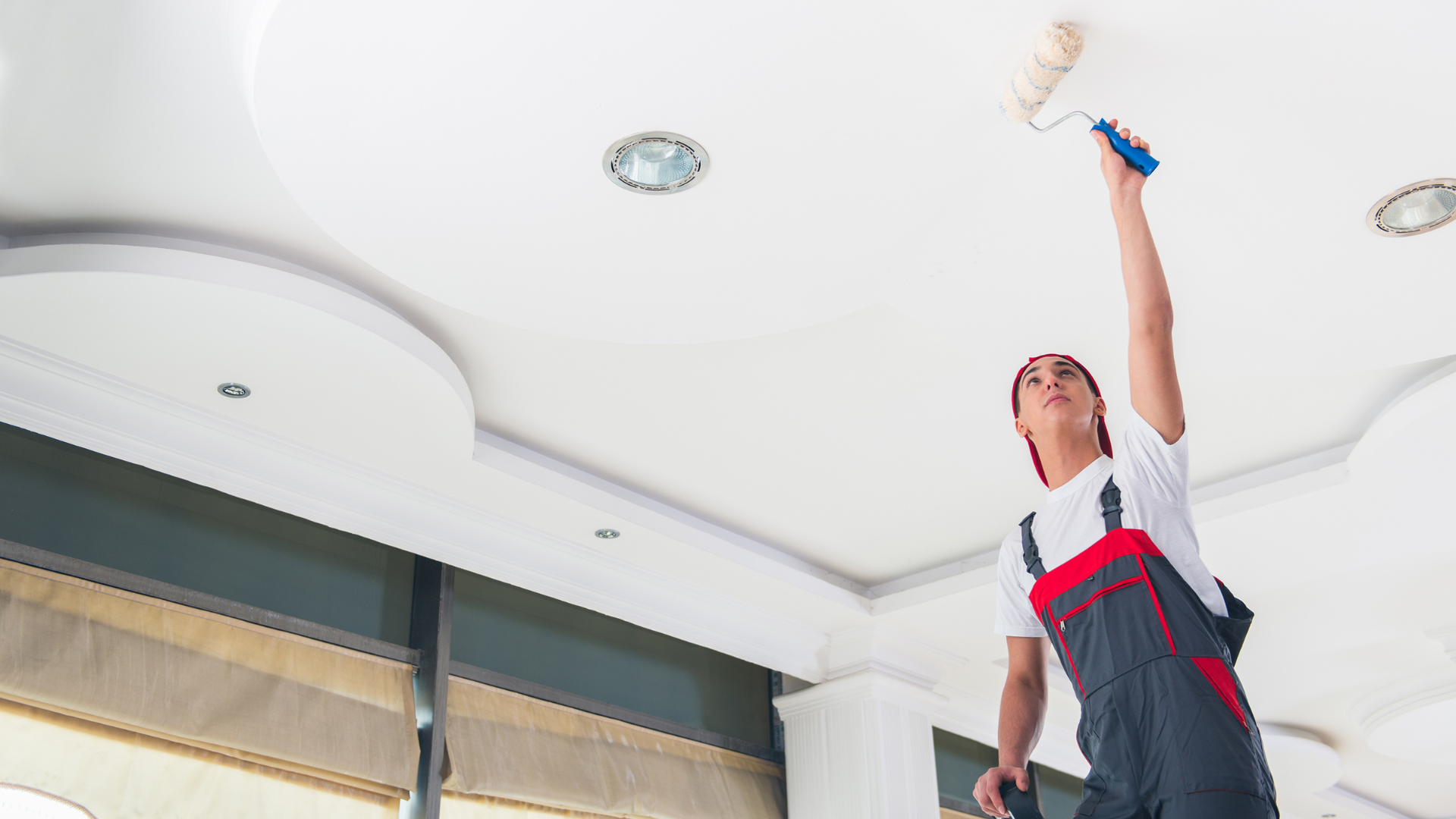How much does it cost to paint a house?

Understanding the Cost of Painting a House
Painting a house, whether interior or exterior, is a significant but necessary investment for homeowners looking to maintain or improve their property's appearance and value.
The cost of painting a house can vary widely based on several factors, making it essential for you to understand what influences these costs and how you can make informed decisions.
Factors Influencing Painting Costs
Size and Scope of the Project
When considering a painting project for your home, the size and scope stand out as pivotal factors in determining the overall cost. This aspect goes beyond mere square meterage; it encompasses the intricacies and dimensions of the work required. Understanding how these elements influence the cost can help you plan and budget more effectively.
Exterior Painting: Square Meterage and Beyond
For exterior painting, the size of your home is a primary determinant of cost. Professionals typically calculate this based on the home's total square meterage, but it's more nuanced than just measuring the ground area. The calculation often includes considering the home's height and the surface area of the walls. Homes with multiple stories or architectural features like gables and eaves can complicate the painting process, requiring more time, equipment, and paint.
Additionally, the type of surface being painted plays a crucial role. Wood, stucco, vinyl, and brick all absorb paint differently and may require special prep work or additional coats, impacting the overall cost. The presence of outbuildings, such as garages or sheds that match the home's exterior, can also expand the scope and expense of the project.
Interior Painting: Wall and Ceiling Considerations
Interior painting costs, conversely, are often calculated based on the area of the walls and ceilings that need painting. This calculation involves the perimeter of the room multiplied by the height, minus the area taken up by doors and windows. However, the scope can vary significantly depending on the project's details. High or vaulted ceilings, for instance, increase the area to be painted and can complicate access, requiring special equipment or techniques that add to the cost.
The choice to paint intricate details such as baseboards, mouldings, window frames, and doors can also expand the scope. These elements require meticulous work and significantly more time, particularly if they involve multiple colours or a high level of precision.
The Importance of Prep Work
Both interior and exterior painting projects may entail considerable prep work, especially in older homes or those that have not been maintained regularly. Preparation tasks can include pressure washing, scraping off old paint, patching holes, caulking gaps, and applying primer. This preparation ensures the new paint adheres properly and lasts longer but also adds to the project's size and scope, affecting the overall cost.
Project Complexity and Labour
The complexity of the painting project directly influences labour costs. Complex projects that require intricate detail work, the use of multiple colours, or special techniques (like faux finishes) demand skilled labour and more time, driving up costs. Logistical challenges such as moving furniture for interior jobs or securing safe access for high exteriors can further increase labour efforts and costs.
The size and scope of a painting project are crucial in determining its cost, encompassing not just the physical dimensions but also the specific requirements and challenges of the work. By understanding these factors, you can better anticipate the expenses involved and make informed decisions, whether setting a budget, selecting materials, or choosing between DIY and professional services.
Careful planning and consideration of these aspects ensure a smoother process and a more satisfying result.
Type and Quality of Paint: Navigating Costs and Benefits
The selection of paint is a critical decision in any painting project, directly impacting both the cost and the final appearance of your home.
With a myriad of options available in the market, understanding the distinctions in paint types and qualities is essential when you are aiming to balance budget considerations with desired outcomes.
High-Quality Paints: An Investment in Durability and Aesthetics
High-quality paints are distinguished by their superior formulations, offering enhanced durability, better coverage, and a more pleasing aesthetic finish. These paints contain higher levels of pigments and binders, which translate to richer colours and a more resilient surface.
Although the initial cost may be higher, the long-term benefits often justify the investment:
- Durability: High-quality paints are more resistant to wear and tear, maintaining their finish over time even in high-traffic areas. This reduces the need for frequent touch-ups or repainting, ultimately saving money and effort.
- Coverage: Superior coverage means that fewer coats are required to achieve a consistent and vibrant finish. This can offset the higher price per litre through reduced paint consumption and labour costs.
- Ease of Application: Better quality paints often apply more smoothly and are more forgiving of imperfections in the painting technique, which can lead to better results, especially for DIY painters.
Specialised Paint Features: Eco-Friendliness and VOC Levels
In recent years, there has been a growing emphasis on eco-friendly paints and those with low volatile organic compounds (VOCs). VOCs are chemicals found in many paints that can evaporate into the air and cause health problems or environmental damage. Low-VOC or VOC-free paints offer a safer alternative, contributing to better indoor air quality and reducing environmental impact.
While these paints tend to be more expensive, they are increasingly preferred for their health and environmental benefits.
Exterior Paints: Formulated for the Elements
Exterior paints face the relentless challenges of weather, from blistering sun and heat to freezing temperatures and moisture. Formulations designed to withstand these conditions are crucial for protecting the exterior of a home and ensuring the longevity of the paint job. These paints are engineered to resist fading, peeling, and cracking, even under severe weather conditions. The advanced technology and materials used in these products contribute to their higher cost. However, investing in high-quality exterior paint can significantly extend the life of a paint job, reducing the frequency and overall cost of repainting.
Navigating Cost vs. Quality
While the upfront cost of high-quality or specialised paint may be higher, the long-term savings in durability, maintenance, and aesthetics can be substantial. Homeowners should consider the specific needs of their project, including the environment (for exterior paints), the room's function (for interior paints), and any health or environmental concerns.
It's also worth consulting with painting professionals or doing thorough research to select the right type of paint for your home. Some projects may benefit more from investments in high-quality paint, while others might achieve satisfactory results with mid-range products.
The type and quality of paint chosen for a project significantly influence both its immediate cost and its long-term value. By carefully considering the specific needs of their project and weighing the initial investment against potential savings and benefits, you can make informed decisions that enhance the beauty and longevity of your home while managing costs effectively.

Prep Work Required: The Foundation of a Quality Paint Job
The importance of thorough preparation before painting cannot be overstated. It's the foundation that ensures the longevity, durability, and aesthetic appeal of the finish. However, this crucial phase also impacts the overall cost of the painting project. The condition of the surfaces to be painted plays a significant role in determining the extent of prep work needed. Understanding the various elements of prep work can help you appreciate its value and factor it into your project budgets.
Assessing the Condition of Walls
The initial step involves a detailed assessment of the walls' condition. This assessment will reveal issues such as cracks, holes, peeling paint, and water damage. The extent of these imperfections dictates the amount of prep work required. For example, a well-maintained wall may only need light sanding and cleaning, whereas a wall with extensive damage may require patching, sanding, priming, and sometimes even replacement of sections of plaster.
Patching and Repairing
Patching holes and repairing cracks are perhaps the most common prep tasks. This process involves filling imperfections with filler or joint compound, allowing it to dry, and then sanding it smooth. Larger repairs, such as fixing water damage or large cracks, might require cutting out sections of plaster, installing patches, and then filling and taping the seams. These repairs are essential for a smooth finish and can significantly affect the project's timeline and cost.
Sanding for Smoothness
Sanding is a critical step that ensures the surface is smooth and ready for paint. It helps to remove any previous paint drips, brush marks, or patches of filler. For interiors, sanding can also level out joint compound used in drywall finishing. Exterior surfaces may require power sanding or even power washing to remove old, flaking paint layers and ensure the new paint adheres properly.
Cleaning and Priming
Once the surface is smooth, it must be thoroughly cleaned to remove dust, grease, and other contaminants that could prevent the paint from adhering. This step often involves wiping down surfaces with a damp cloth or using a specialised cleaning solution.
Priming is the next critical step, serving several purposes: it ensures paint adhesion, increases paint durability, and provides a uniform surface that enhances the final colour. In some cases, especially when dealing with dark colours, stains, or significant surface variations, a primer is essential to achieve the desired finish and colour accuracy.
The Impact on Cost
Each of these preparation steps requires materials and, more importantly, labour. Labour costs can quickly accumulate, especially for extensive prep work on surfaces that have been neglected or damaged. In some instances, the prep work can cost as much, if not more, than the actual painting. This is particularly true for projects requiring significant repairs or meticulous surface preparation to achieve high-quality results.
The need for specialised equipment or materials for certain types of prep work, such as scaffolding for high areas or specific primers for challenging surfaces, can also increase costs. The prep phase can extend the project timeline, potentially adding to the overall cost if the painting is being done by professionals who charge by the day or project.
Preparation is a vital component of any painting project, setting the stage for a successful and lasting finish. While it can significantly impact the cost, thorough and proper prep work ensures that the painting investment is protected. You should consider the condition of your walls and the extent of prep work required when budgeting for a paint job. Investing in this crucial stage can save money and headaches in the long run by preventing the need for premature repaints due to poor adhesion or surface imperfections.

Complexity and Detail Work: Navigating the Intricacies of Painting Projects
When planning a painting project, the complexity and detail work involved are critical factors that can significantly affect the overall cost. These aspects go beyond the basic application of paint to walls, involving elements that require a higher degree of skill, time, and precision. Understanding how these factors contribute to the cost can help you make informed decisions and budget appropriately for your painting projects.
High Ceilings and Hard-to-Reach Areas
Rooms with high ceilings or hard-to-reach areas present a unique challenge. These spaces often require special equipment such as scaffolding or tall ladders, and the work itself can be more time-consuming and hazardous. Painting in these conditions demands a higher level of skill and safety precautions, which can lead to increased labour costs. The process of setting up and moving scaffolding or ladders around the room adds to the project's duration, further influencing the cost.
Intricate Trim Work and Fine Details
Intricate trim work, such as skirtingboards, crown moldings, door frames, and window sills, adds elegance and character to a space but also complexity to a painting project. These elements often require meticulous handwork, precision, and multiple coats of paint to achieve a flawless finish. The time and skill level required for detailed brushwork significantly contribute to the overall cost. Furthermore, if the project involves restoration or intricate patterns, the cost can escalate due to the specialised expertise and additional time required.
Multiple Colours and Custom Finishes
Opting for multiple paint colours within a room or across different rooms introduces complexity in terms of planning and execution. Each additional colour can mean extra time for setup, masking, and cutting in at the edges, increasing the labour involved. Using multiple colours often requires more cleanup time between colours and additional materials, such as different primers or brushes to prevent colour contamination.
Custom finishes, such as faux finishes, textured paint, or murals, require a high degree of artistry and technique. These specialised finishes are labour-intensive and time-consuming, reflecting in higher costs. The unique materials and tools needed for these effects, along with the artist's skill, contribute to the premium pricing of these custom services.
The Impact on Project Duration and Cost
The complexity and detail work involved in a painting project have a direct impact on its duration and cost. Detailed and intricate work is labour-intensive, requiring more hours from skilled professionals. This precision work often progresses at a slower pace than more straightforward painting tasks, extending the project timeline.
The increased risk and skill level associated with working on high ceilings or executing detailed finishes often mean that painters charge a premium for these services. The complexity of the job also increases the likelihood of unforeseen challenges, which can further influence the project's cost.
Balancing Cost and Quality
While intricate detail work and complex features can elevate the aesthetic of a space, they also increase the painting project's cost. Homeowners should consider the value these elements add to their home against the additional expense involved. In some cases, compromises or adjustments in the project scope can help manage costs without significantly compromising the desired outcome.
Engaging with experienced professionals who can provide accurate estimates and advice on managing complexity can ensure that you achieve your vision in a cost-effective manner. Detailed planning and clear communication about expectations and budget constraints are key to navigating the intricacies of complex painting projects successfully.
The complexity and detail work required in a painting project can significantly influence its cost. Features like high ceilings, intricate trim work, and the use of multiple colours or custom finishes require additional time, precision, and skill. When planning a painting project you should factor these elements into your budgeting and decision-making process, balancing your aesthetic goals with the realities of project costs.
Labour Costs in Painting Projects: Regional Variations and Influences
Labour costs are a pivotal factor in the overall expense of a painting project, significantly impacting the budget. These costs can vary widely across different regions, influenced by factors such as the cost of living, local market rates, and the availability of skilled labour. Understanding these regional variations can help you budget more accurately for your painting projects.
Metropolitan Areas vs. Rural Areas
In metropolitan areas, where the cost of living is generally higher, painting services tend to be more expensive. This price difference is due in part to higher operational costs, including wages, insurance, and transportation, which service providers pass on to the consumer. Additionally, the demand for painting services in urban areas can be higher, allowing contractors to command premium prices.
Conversely, in rural areas, where the cost of living and operational costs are lower, painting services may be more affordable. However, the availability of professional painters might be limited in these areas, which can affect pricing due to the lack of competition or the need to bring in skilled labour from other areas.
The Impact of Local Economic Conditions
The local economic conditions of a region can also influence labour costs for painting projects. In areas experiencing economic growth, the demand for construction and renovation services, including painting, may increase, leading to higher labour costs due to the increased demand for skilled labour. Conversely, in regions with slower economic growth, labour costs may be lower, as contractors compete more aggressively for work.
Availability of Skilled Labour
The availability of skilled painters in a region can significantly affect labour costs. Areas with a large pool of skilled labour may see more competitive pricing due to the competition among service providers. On the other hand, regions with a shortage of skilled painters may experience higher labour costs, as the demand for these professionals exceeds the supply.
Seasonal Variations
Labour costs for painting projects can also vary seasonally. During peak seasons for home improvement projects, such as late spring and summer, demand for painting services increases, potentially driving up labour costs. During the off-season, painters may lower their rates to attract more business, offering homeowners an opportunity to save on labour costs.
Planning and Budgeting for Regional Labour Costs
Homeowners planning a painting project should consider these regional and seasonal variations when budgeting for labour costs. Obtaining multiple quotes from local contractors can provide a clearer picture of the going rates for painting services in the area. It’s also beneficial to ask about any seasonal discounts or promotions that contractors may offer.
Additionally, homeowners can inquire about the breakdown of costs in the quotes they receive, understanding how much of the total cost is attributed to labour versus materials. This transparency can help in making informed decisions and negotiating more effectively.
Labour costs play a significant role in the overall expense of a painting project and can vary widely depending on regional factors such as the cost of living, local economic conditions, and the availability of skilled labour. By understanding these variations and planning accordingly, you can better manage your budgets and ensure a successful and cost-effective painting project. Seeking multiple quotes and considering the timing of the project can further help in optimising the cost without compromising on quality.
Exterior vs. Interior Painting Costs
Exterior Painting: Understanding Costs and Variables
Exterior painting is a significant investment in maintaining and enhancing a home's street appeal and protection from the elements. The costs associated with exterior painting can vary widely, depending on several key factors. These factors include the size of the home, the type of paint used, the condition of the exterior surface, and any additional features or challenges that may complicate the painting process.
Let's look at these aspects to better understand the financial implications of exterior painting projects.
Size and Structure of the Home
The size of the home is one of the most straightforward determinants of painting costs. Larger homes require more paint and longer labour hours, increasing the overall cost. Additionally, the architectural design of a home can influence the cost. Homes with intricate designs, multiple stories, or hard-to-reach areas necessitate extra time, safety measures, and equipment, further elevating the price.
Type of Paint and Materials
The choice of paint plays a crucial role in the cost of an exterior painting project. High-quality exterior paints that offer durability against weather conditions, UV resistance, and other protective qualities tend to be more expensive. These paints, however, offer better longevity and can reduce the frequency of repainting, potentially saving money in the long run. Specialised paints, such as those with low VOCs or designed for specific materials like wood or stucco, can also increase the project's cost.
Condition of the Exterior Surface
The existing condition of a home's exterior significantly impacts the amount of prep work required before painting can begin. Homes that have peeling, cracking, or blistering paint; wood rot; or other damage will require extensive preparation, including scraping, sanding, patching, and priming. This prep work is essential for achieving a high-quality finish but adds to the labour and material costs of the project.
Additional Features and Challenges
Features such as decks, patios, intricate trim, and multiple colours can add complexity and cost to an exterior painting project. These features often require more detailed work, increasing the time and precision needed. Challenges such as steep terrain, accessibility issues, or the need for specialised equipment to reach high areas can also contribute to higher costs.
Regional and Seasonal Price Variations
As with other aspects of home improvement, the cost of exterior painting can vary by region, reflecting the local cost of living and labour rates. Seasonal demand can also affect pricing, with peak seasons typically commanding higher rates due to increased demand for painting services.
Estimating Costs
Given these variables, the cost for a standard home's exterior painting project can range from $3,000 to $20,000 or more, with the average cost around $5,500 to $9,000. It's essential for you to get detailed quotes from several contractors to understand the specific factors influencing the cost for your particular project. These quotes should break down the costs for labour, materials, and any additional fees to provide a clear picture of the investment required.
Exterior painting is a complex project influenced by various factors that affect the overall cost. When considering this investment you should carefully evaluate the scope of work, the quality of materials, and the specific challenges your home may present. By understanding these cost drivers and seeking multiple quotes, you can budget effectively for your exterior painting projects, ensuring a successful outcome that enhances your home's aesthetic appeal and protection.
Interior Painting: Costs, Considerations, and Planning
Interior painting is a transformative home improvement project that can refresh and rejuvenate your living space. However, the costs associated with this endeavour can vary significantly, influenced by a variety of factors including the size of the space, the quality of paint and materials used, the complexity of the job, and the labour involved. Understanding these variables can help you effectively plan and budget for your interior painting projects.
Size of the Space
The cost of interior painting is often calculated on a per square metre basis, typically ranging from $6 to $20. This range accounts for the painting of walls and ceilings, with the lower end of the spectrum generally applying to larger, straightforward projects and the higher end to more detailed and complex jobs. For a standard home, covering all interior spaces can lead to a total cost ranging from $3,500 to $9,500, but this can vary based on specific project details.
Quality of Paint and Materials
The choice of paint significantly impacts the overall cost. Higher quality paints with specific properties, such as eco-friendliness, low VOCs, or specialised finishes, tend to be more expensive. However, these paints can offer better coverage, durability, and a more satisfactory final appearance, potentially reducing long-term costs associated with touch-ups or repainting.
Materials beyond paint, including primer, tape, drop cloths, and brushes or rollers, also contribute to the cost.
The quality and quantity of these materials can affect both the project's outcome and its price.
Complexity of the Job
The complexity of an interior painting project influences the cost in several ways. Factors such as high ceilings, intricate trim work, the need for multiple colours, or the presence of hard-to-move furniture can increase the amount of time and precision needed, thereby raising the cost. Special finishes, such as faux finishes, textured painting, or the use of stencils, require additional skill and labour, further impacting the price.
Labour Costs
Labour costs vary by region, with metropolitan areas generally seeing higher rates due to the higher cost of living. The expertise of the painters also plays a role; specialised or highly experienced painters may charge more for their services. It's worth noting that while higher labour costs can increase the initial investment, skilled professionals can deliver a higher quality finish that lasts longer, potentially saving money over time.
Preparation and Repairs
Preparation work, including repairing holes, sanding, and priming, is essential for a high-quality painting job. The extent of these preparatory tasks can significantly affect the project's cost, particularly if extensive repairs or meticulous preparation is required to address imperfections.
Additional Considerations
- Estimates and Quotes: Obtaining detailed quotes from multiple contractors can provide a clearer picture of the project's cost. These quotes should itemise the costs for labour, materials, and any additional services.
- DIY vs. Professional Services: You may consider undertaking the project yourself to save on labour costs. However, it's important to weigh the potential savings against the time investment and the quality of the finish that can be achieved.
- Planning and Timing: Scheduling the project during off-peak times can sometimes result in lower costs. Additionally, planning the project well in advance allows for more time to source materials and compare quotes.
Interior painting projects offer an opportunity to refresh your home's appearance but come with various cost considerations. By understanding the factors that influence these costs and carefully planning the project, you can manage your budgets effectively and achieve a satisfying transformation of your living spaces.
Additional Costs to Consider
1. Repairs: If repairs are needed before painting can commence, this will add to the overall cost. Issues like water damage, large holes, or rot (for exteriors) need to be addressed.
2. Quality of Materials: Besides paint, the quality of brushes, rollers, and other materials can affect the finish and longevity of the paint job.
3. Height and Accessibility: For exterior painting, homes with multiple stories or difficult-to-reach areas may require additional equipment like scaffolding, increasing the cost.
Saving Money on House Painting
While painting a house can be expensive, there are ways to save money without compromising on quality:
- DIY: For those who are handy and have the time, doing the painting yourself can save on labour costs.
- Comparative Quotes: Getting multiple quotes from professionals can help ensure you're getting a fair price.
- Timing: Painting during the off-season (late fall or early winter) might secure lower rates as demand for painting services decreases.
- Prep Work: Doing some of the prep work yourself, if able, can reduce the hours a professional needs to work on your home.
Painting a house is a considerable investment, but understanding the factors that influence the cost can help you make informed decisions. Whether opting for a DIY approach or hiring professionals, considering the project's size, the paint quality, and additional factors like prep work and complexity can ensure that you achieve a beautiful finish without unnecessary expenses.





